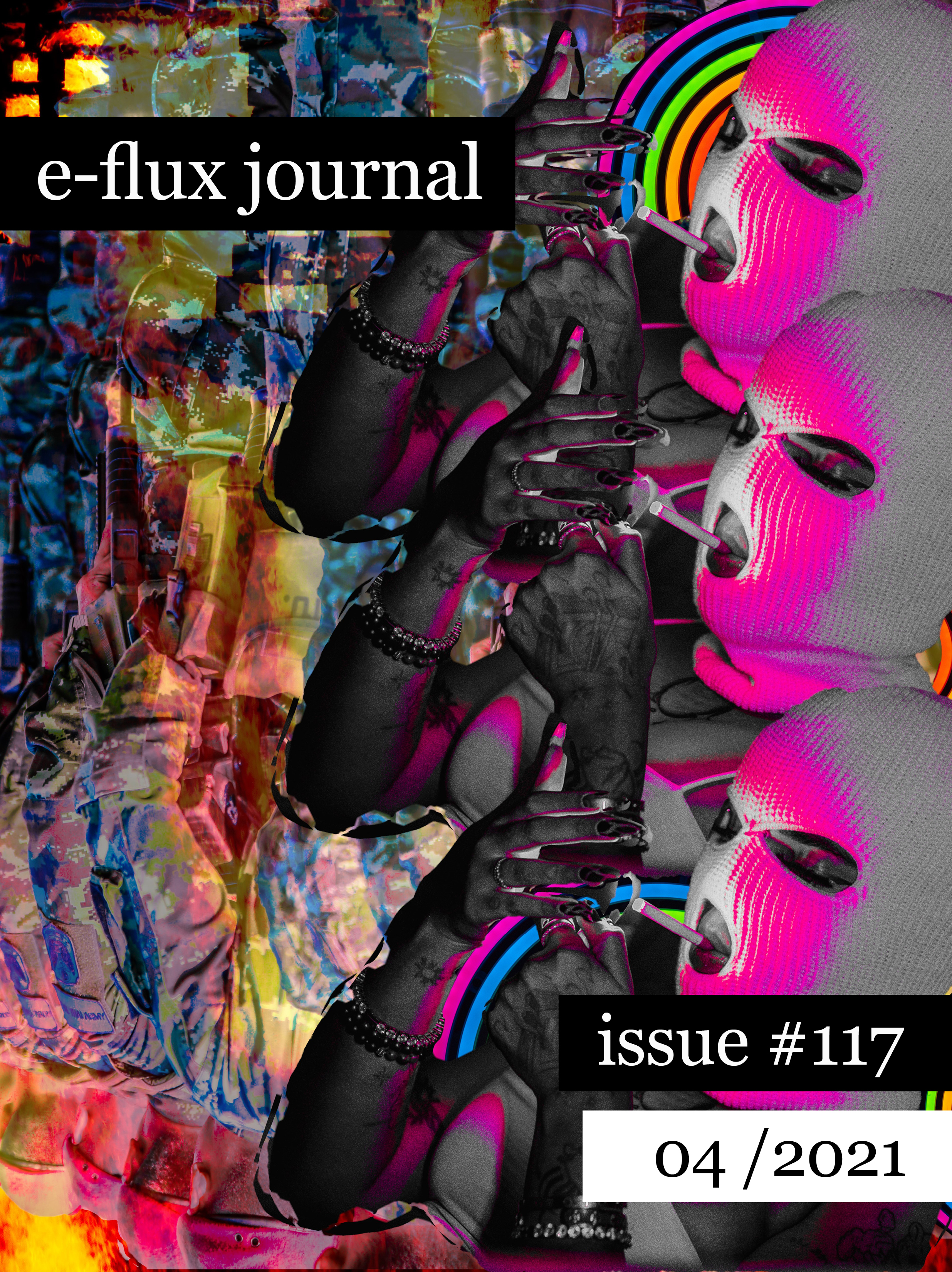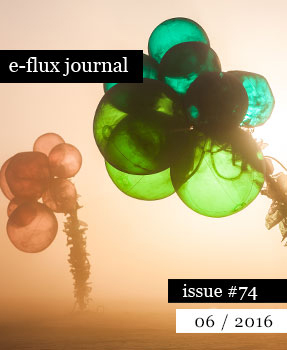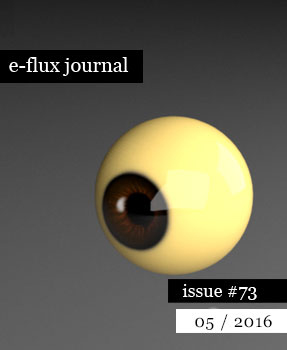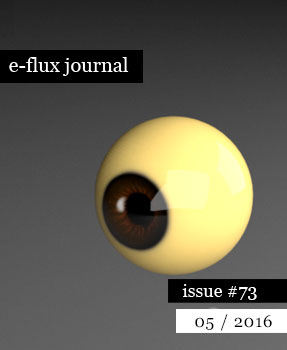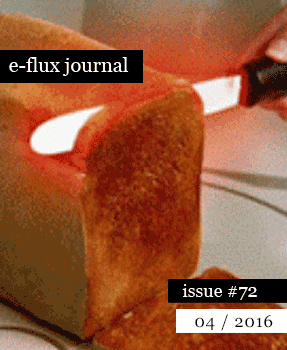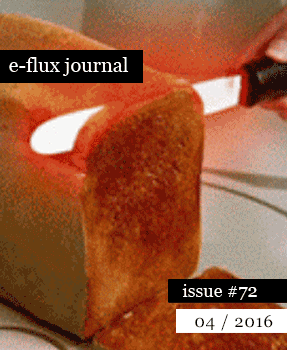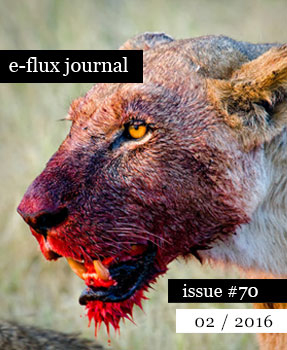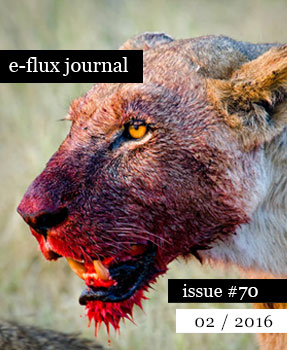e-flux journal issue 117: “trans | fem | aesthetics”
guest-edited by McKenzie Wark
with Isabel Sandoval, Jules Gill-Peterson, Rosza Daniel Lang/Levitsky, Bishakh Som, Sultana Isham, Tamarra and Riksa Afiaty, Kira Xonorika, Maxi Wallenhorst, Eva Hayward, McKenzie Wark, Emily Alison Zhou, and Comrade Josephine (embodied by Luce deLire)
I had to get my transsexual ass off social media today. The clash of reciprocally negating arguments never moves forward. There is no “debate.” There’s certainly no “debate” between transphobia and, let’s call it, transphilia. Since we are more tolerated or accepted than loved by the cis world, transphilia is pretty much restricted to other trans people. And since we can have a hard time loving ourselves, we can have a hard time loving each other.
Nothing ever comes of “debate” with those who think we aren’t people. Nothing except a hardening of identities on both “sides,” premised entirely on opposition to being negated by the other. Worse, the politics of a reactive transphilia then yokes “us” together as trans people so that our differences among ourselves are suppressed in the name of opposition to a common enemy, and so only the dominant forms of trans-ness end up being acknowledged.
Bourgeois culture loves a clash of representatives. And it loves to present the “sides” to the “debate” as equivalent. It’s always about representatives speaking for others, in “debate” with other representatives, speaking for the other to those others. Those of us merely represented become a market segment. Entire platforms are now designed to monetize this.
Writers often have little choice but to buy into this whole charade. But even “our” champions, the standard-bearers of transphilia, are bound by the same information economy. One that continually slips out of our attention as an information economy, run for the profit and glory of the class that owns it. The spectacle of “debate” distracts us from who owns the arena.
Culture moves when it takes a diagonal out and away from all that. The interesting stuff is always that which subtly refuses to be corralled into the confines of a hollowed-out identity, given meaning only by its other. That which leaks out, ducks the fence, finds the unbounded space: that’s where trans lives really can become possible. But you can get lost out there. You can get scared; you can retreat back into the bounds and binds of identity—and police it. You can give into that inner cop, as if you alone represented the order of being that is good for us.
Those who make it possible to really live as a trans woman are rarely those who are our representatives to the other, and still less those who appoint themselves among us as the police of our supposed collective identity. Those who make it possible are artists. Not fine artists necessarily, nor writers of “fine writing.” They might work in minor, vernacular forms. They might just be artists of trans life itself. They might be undetectable outside of our little covens of care. They make up stories or images or gestures that elude the limits of what they, and we, were handed. Making it up as they go.
When e-flux journal asked me to guest-edit an issue, what I thought I could contribute would be to commission some writing on trans | fem | aesthetics. We need a politics, of course. Perhaps we even need champions of “debate.” I just feel like it’s not enough. We need our own art, and our own places to write about how we think and feel about our own art. Places to be relaxed about that “we,” and easy about how expansive our “place” can be. I wanted to make a contribution to finding the routes out, both of the space into which transphobia constrains us, and also out of the spaces of transphilia in which sometimes we even constrain ourselves.
I wanted to be open to different ways of experiencing and reflecting on trans life, along the feminine end of the spectrum. Big love for our trans brothers and others! Those are not my lives, and the aesthetics of trans masculinity or of nonbinary life are not things I know at all well. So, the ambit of this issue was both broad in thinking about what trans could mean, or what fem could be, but also particular in imagining that trans | fem is already a big, open space where a lot escapes our habits already.
So here’s what we have for you: Rosza Daniel Lang/Levitsky gives us ways of thinking about where the term “fem” or “femme” came from in the first place, looking at the North American experience, and focusing on black and working-class queer cultures. Sultana Isham listens for echoes of a much older black trans | fem experience (which doubtless had other words for itself), and that left its trace, as is so often the case, when the police arrived.
Gender is not necessarily a universal category, other than to the extent that a certain model of it was imposed on much of the world by colonization. Kira Xonorika takes us through the legacy of colonial gender in Paraguay, and shows us some artists—one of the street, some of the gallery—who turn it aside to make trans experience matter otherwise. In Riksa Afiaty’s interview with Tamarra, we touch on the complexities of gender in various parts of Indonesia, and aesthetic traditions in which other genders resonate in other ways.
Trans artists and writers can bring a distinctive approach to appropriating and reworking gendered material, as Tamarra does in the Indonesian context, or as Isabel Sandoval does as a filmmaker working between the Philippines and the United States. Jules Gill-Peterson offers a personal reflection on working with feminist philosopher Luce Irigaray and learning from her in ways unexpected. Emily Alison Zhou reads the digital poetics of Allison Parrish as opening a space for trans | fem creation that does not center the gendered body or the experience of the writer but moves instead within the interior states of machines.
Although the feeling is not unique to us, there’s a common trans | fem tendency to dissociate. To be, or to prefer to be, not here—to be away from our bodies, away from this world. Maxi Wallenhorst writes of an aesthetics of dissociation which connects the experiential side of displacement out of the body with an alienation from the social relation in whatever era of commodified life this is.
Eva Hayward looks at the work of the painter Erica Rutherford for a visual aesthetics of inventing rather than representing the trans | fem body. Painting opens a space beyond the conflation of the photographic with the real, one particularly germane to trans women, given how we are obliged to present our bodies and ourselves as fully “realized” in the medium of photography, as if it was an index of being.
Finally, Luce deLire channels the somewhat terrifying energy of Comrade Josephine, whose Pink Totaliterianism is an intentionally literal inhabiting of the Canceling Angel that stalks the all-too-vivid dreams-slash-nightmares of transphobes, who think we’re out to put them in gender reeducation camps. Comrade Josephine returns us to the bunker of transphilia as the base from which to counterattack.
One of the reasons I was so happy to work with e-flux journal is that it has already been a place where trans writing and trans aesthetics have been able to mount their escapes. There’s plenty here already to work with or differ from. It’s one of the places Paul Preciado’s book Testo Junkie was first introduced to the Anglophone reader (issue #44). It’s where Suely Rolnik included trans existence in the insurrection against the pimping of life (#86). And where Greg Youmans centered trans work in documenting Bay Area queer film and video (#44). There are even texts on a topic our contributors did not explore so much: the trans-ness internal to the long history of Western culture itself (Elvia Wilk in #92 and Sam Richardson in #107).
Kira Xonorika’s contribution in this issue can connect to past contributions to the journal from Pilar Villela Mascaró on gender and colonialism (#92), Ana Hoffner ex-Prvulovic on heteronormativity and orientalism (#97), and Paul B. Preciado on mapping new practices of political subjectivation, gendered or otherwise (#114). Isabel Sandoval’s firsthand account as a trans artist is a companion to that of Ariel Goldberg (#94). Critical appreciation of particular trans artists—Zhou of Parrish, Hayward of Rutherford, me on Shola von Reinhold—join pieces on Jessie Rovinelli and Juliana Huxtable (#107 and #102). Eva Hayward’s work connects to Rebekah Sheldon on queer and trans being beyond the human (#73) and Irmgard Emmelhainz on gender and the conceit of the masculinity of rational consciousness (#92). And finally, e-flux journal is also where I first “came out” as writing from a trans aesthetic perspective, with a reading of Kathy Acker (#93).
Forgive me for flipping into study guide mode! In sum, there are plenty of resources not only in this issue but back through the e-flux journal archive to get out of the standstill dialectic of transphobia and transphilia. Trans people have always been artists of what Shola von Reinhold calls the “Escape.” There’s not much one can say or do about trans shit that is without precedent. We’re always here, in one guise or another, sometimes visible, sometimes not. Sometimes trying to be legible to each other but not the world.
Perhaps the project is to make our knowledge and our art both cumulative and reflexive: to not only document and archive it, but also to help it build on its own critical and creative engagements; to encourage its various distinctive lines of flight to encounter and entangle with each other. Aesthetics alone won’t save us, but perhaps it can make enduring seem worthwhile. Perhaps it can enrich the habit, among ourselves, of other kinds of love.
—McKenzie Wark, Brooklyn, March 31, 2021
Isabel Sandoval—Seeing as the Other
I never thought being the “other” was a bad thing. On the contrary, where people tended to see subjugation and marginalization, I reveled in the potential for subterfuge. A film artist needs seductive powers—the sense of elusiveness and unknowability that comes with genuinely being an individual.
Jules Gill-Peterson—The Miseducation of a French Feminist
Irigaray made real for me an autonomy and a legitimation in my search for a livable self, and now it’s the subjecthood with which I write these words, full of femme feeling. Her unlikely trans feminism has worked well in that way, regardless of anything she’s ever written, or said, that is radically insufficient on other grounds. Here I am, a brown woman to her because I present myself as one and it’s not her desire to decide on my sexual difference or my subjectivity. French feminism of a surprising sort.
Rosza Daniel Lang/Levitsky—Our Own Words: Fem & Trans, Past & Future
These days, “fem” has come to be used as a synonym for conventional femininity, and “queer” has come to mean “lesbian, gay, and bisexual” in a spicier tone of voice. This draining of political meaning from words we’ve called home has affected trans worlds less deeply than cis ones up to this point, but it is underway among us as well.
Bishakh Som—The Tourist
Something in me gave way that night. As quickly as I had thrown myself into this holiday, this escape from my work week, I had found myself detached, suddenly, just as fast.
Sultana Isham—Noise Is the Nigga of Sound
Gender and sexuality are different, and the constant pairing of these issues in public policy sends a confusing message and fails to acknowledge our concrete gendered experiences. White women can create movements and tell stories and not mention Black women and those of color. Gays and lesbians can do the same and boldly practice transphobia. However, when Black women of trans experience speak, we are expected to fight for everyone. That is a Black woman’s narrative.
Tamarra interviewed by Riksa Afiaty—To Build a Better Workspace for Us
In Indonesia, “ludruk” is a performing art that functioned as public entertainment in the colonial era. You can find it easily in Indonesia’s East Java region, especially Jombang and Mojokerto. Ludruk involves transgender women, who in this context are called various local terms: “tandak,” “travesti,” “siban,” “banci,” or “waria.” The term “waria” is a combination of the Indonesian words “wanita” (woman) and “pria” (man).
Kira Xonorika—Post-genitalist Fantasies / Temporalities of Latin American Trans Art
The grassroots construction of trans community often happens in response to an absence of infrastructure, of support systems that allow for a life worth living. This construction of communal pathways of shared languages and practices is a laborious process that requires asking uncomfortable questions.
Maxi Wallenhorst—Like a Real Veil, Like a Bad Analogy: Dissociative Style and Trans Aesthetics
We tell ourselves stories in order to live, but what if these stories are too pulpy? The word “dissociation” is increasingly used to describe episodes in which feeling doesn’t feel like feeling, in which it can’t sufficiently get across the effects of personhood on the one hand and reality on the other.
Eva Hayward—Painted Camera, “Her”
Bodies remain trouble. Irrefutable, unknowable, and seductive, bodies are what thought wants to escape but never can. All thought emanates from bone, muscle, skin, and nerve, and yet to think is as far as we can feel our own disembodiment.
McKenzie Wark—The Cis Gaze and Its Others (for Shola)
I want to focus not so much on the male gaze, but on the cis gaze—a looking that harbors anxiety about the slippages and transformations between genders, but which also harbors desires for those transitions as well. I don’t want to think from the point of view of this dominating, controlling, and yet fragile cis perspective, nor even to critique it. I want to think, and feel, and imagine from outside of it.
Emily Alison Zhou—Digging and Sinking and Drifting: Allison Parrish’s Machine Poetics
Rejecting “conventional language” itself seems like an appropriate project for trans literature; like feminist practitioners before us, trans writers are faced with creating inside of a discourse hostile to our particular subjectivity, using what works and discarding the rest.
Comrade Josephine (embodied by Luce deLire)—Full Queerocracy Now!: Pink Totaliterianism and the Industrialization of Libidinal Agriculture
The order of libidinal agriculture is the order of neoliberal totalitarianism in disguise. The couple form may look like a plot of land for individual use. But really it is an industrial production site for all sorts of capital (financial, cultural, social, emotional, etc.).
